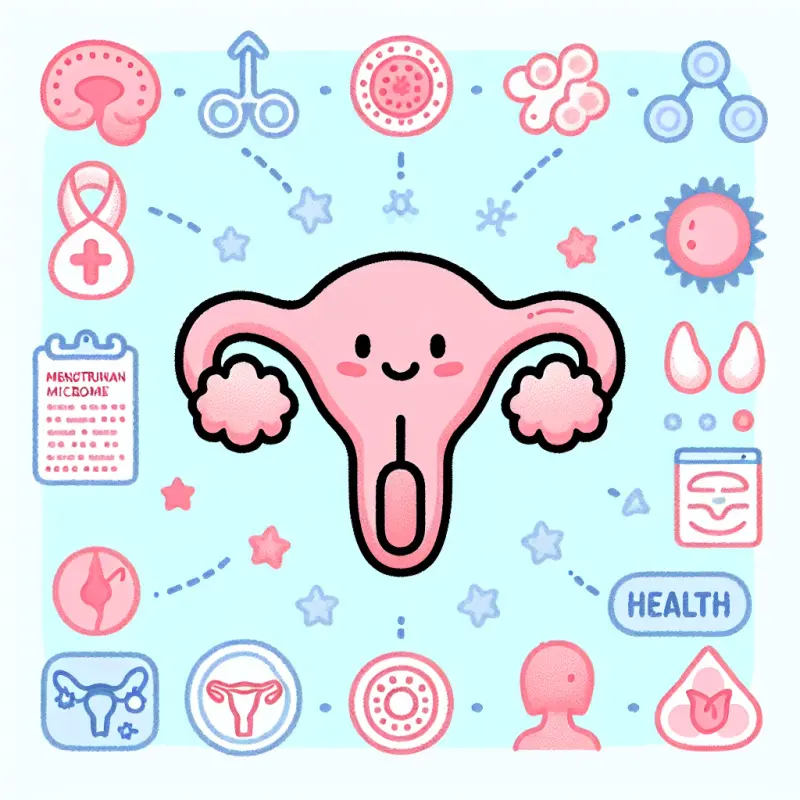The Vaginal Microbiome: Menstruation, Sex, and Health

The Vaginal Microbiome: Menstruation, Sex, and Health
Introduction
The human body is home to trillions of microorganisms, collectively known as the microbiome. Among these diverse ecosystems, the vaginal microbiome holds a unique and crucial role in women's health. It acts as a natural defense system, protecting against infections and maintaining overall reproductive health. In recent years, research has unveiled the intricate dynamics of the vaginal microbiome and its interactions with various factors, including menstruation, sexual activity, and overall health. Understanding these relationships is essential for promoting well-being and addressing issues that may arise from imbalances in this delicate ecosystem.
This article delves into the complexities of the vaginal microbiome, exploring its composition, functions, and the influence of menstruation, sexual activity, and health practices. By shedding light on these aspects, we hope to empower readers with knowledge that can lead to informed decisions about their vaginal health.
Understanding the Vaginal Microbiome
What is the Vaginal Microbiome?
The vaginal microbiome refers to the community of microorganisms residing in the vaginal environment. Unlike other microbiomes in the body, the vaginal microbiome is relatively simple, primarily dominated by bacteria from the genus Lactobacillus. These bacteria play a pivotal role in maintaining vaginal health by producing lactic acid, which keeps the vaginal pH low (between 3.5 and 4.5). This acidic environment is hostile to many harmful pathogens, thus providing a protective barrier against infections.
Composition and Diversity
While Lactobacillus species are predominant, the vaginal microbiome can also include other bacterial genera such as Gardnerella, Atopobium, and Prevotella. The composition of the vaginal microbiome can vary significantly among women and even within the same woman over time. Factors such as genetics, hormonal changes, and lifestyle can influence this diversity.
Functions of the Vaginal Microbiome
The vaginal microbiome serves several essential functions, including:
- Protection Against Pathogens: By maintaining an acidic environment, the microbiome inhibits the growth of harmful bacteria and yeast.
- Immune System Modulation: It interacts with the host's immune system, helping to regulate inflammatory responses.
- Support for Reproductive Health: A balanced microbiome is crucial for fertility, pregnancy, and preventing complications such as preterm birth.
The Impact of Menstruation on the Vaginal Microbiome
Hormonal Fluctuations and Microbial Changes
Menstruation involves significant hormonal changes that can impact the vaginal microbiome. The menstrual cycle is marked by fluctuations in estrogen and progesterone levels, which can influence the composition and stability of the microbiome.
- Estrogen Surge: During the follicular phase, rising estrogen levels support the growth of Lactobacillus species, which help maintain a healthy vaginal environment.
- Menstrual Phase: The shedding of the uterine lining and the presence of menstrual blood can temporarily alter the vaginal pH, leading to a decrease in Lactobacillus dominance.
Menstrual Products and Their Effects
The choice of menstrual products can also impact the vaginal microbiome:
- Tampons and Pads: These can absorb vaginal secretions along with menstrual blood, potentially disrupting the natural environment.
- Menstrual Cups: Studies suggest that menstrual cups may have less impact on the vaginal microbiome compared to traditional products.
Strategies for Maintaining Balance
To support a healthy vaginal microbiome during menstruation, consider the following:
- Opt for unscented and hypoallergenic menstrual products.
- Maintain good menstrual hygiene practices.
- Consider probiotics specifically designed for vaginal health.
The Role of Sexual Activity in Shaping the Vaginal Microbiome
Introduction of New Microbes
Sexual activity introduces new microorganisms into the vaginal environment, which can influence its composition:
- Sexual Partners: The exchange of bodily fluids and skin contact can transfer bacteria between partners.
- Barrier Methods: Condoms can reduce the transmission of microbes and help protect the vaginal microbiome.
The Influence of Lubricants and Contraceptives
- Lubricants: Some lubricants may contain ingredients that disrupt the natural balance of the microbiome. Opt for water-based, pH-balanced options.
- Hormonal Contraceptives: These can alter hormone levels, potentially impacting the vaginal microbiome composition.
Protecting the Vaginal Microbiome During Sexual Activity
- Practice safe sex to minimize the risk of sexually transmitted infections (STIs).
- Consider discussing the use of probiotics with a healthcare provider to maintain a healthy microbiome.
Health Implications of an Imbalanced Vaginal Microbiome
Common Vaginal Infections
An imbalance in the vaginal microbiome can lead to several health issues, including:
- Bacterial Vaginosis (BV): Characterized by a reduction in Lactobacillus and an overgrowth of other bacteria, BV can cause symptoms like unusual discharge and odor.
- Yeast Infections: An overgrowth of Candida yeast can lead to itching, burning, and thick discharge.
Long-Term Health Consequences
- Increased STI Risk: An imbalanced microbiome may make it easier for pathogens to establish infections.
- Pregnancy Complications: Disruptions in the vaginal microbiome have been linked to preterm birth and other complications.
Strategies for Restoring Balance
- Probiotics: Supplements containing Lactobacillus strains may help restore a healthy balance.
- Diet and Lifestyle: A balanced diet rich in fiber and low in processed sugars can support overall microbiome health.
- Avoiding Douching: Douching can disrupt the natural balance and is generally not recommended.